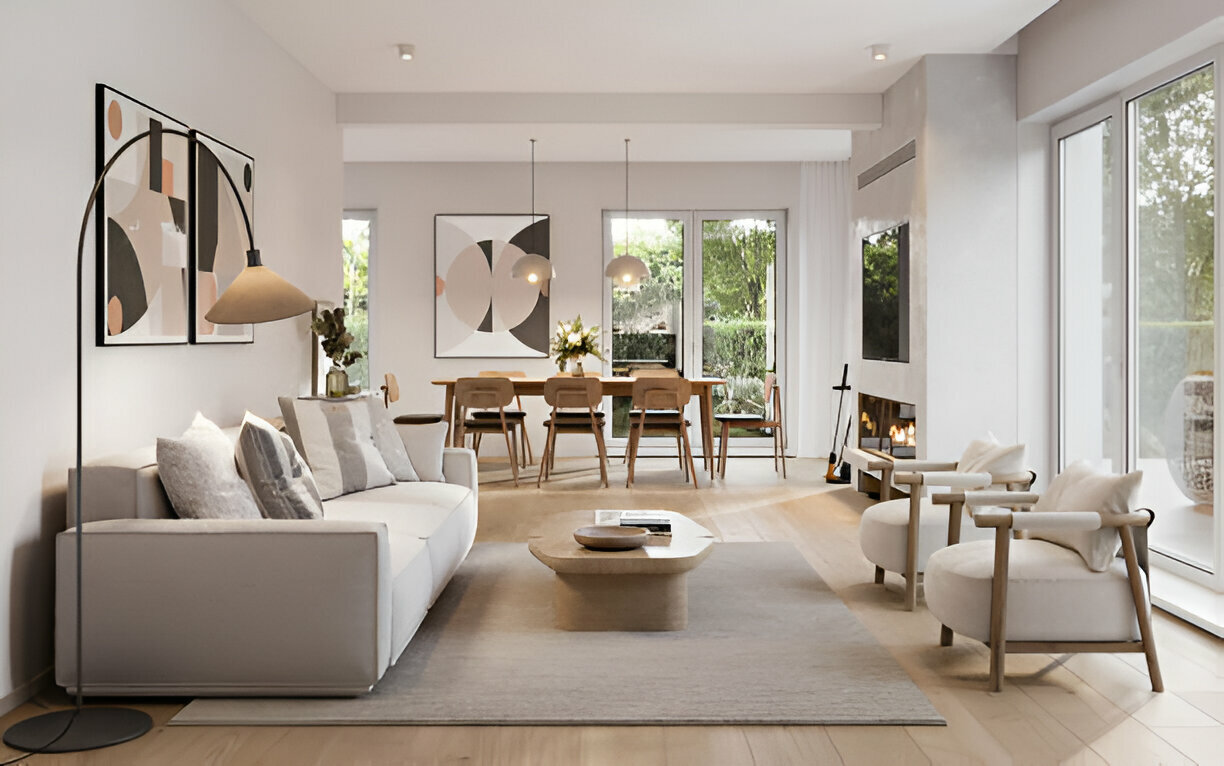General
Design Dreams, Real Budgets: Practical Planning for Success


The search for a dream house often begins with a dream-built construction, an inspiration that sparks the imagination and satisfies the need for change. However, even with the allure of configuration aspirations, there’s a depressing reality to face: budgetary constraints. “Configuration Dreams, Genuine Spending Plans: Viable Making Arrangements for Home Plan Achievement” provides a framework for navigating the complexities of home plans within the bounds of financial sobriety, perfectly capturing the delicate dance between desire and moderation.
A trip invites real estate owners to embark on a voyage where creativity melds with necessity and the pursuit of beauty melds with planned discipline. With this discussion, we hope to equip people with the dreams of remodeling a house, tools, and information necessary to turn their visions for their plans into tangible realities, resolving conflicts between creativity and reason with clarity and artistic expression.
Setting Realistic Expectations:
Creating reasonable assumptions is essential to starting any home design job, especially when adhering to budgetary constraints. It involves a precarious balance between envisioning the ideal home and acknowledging the practical limitations of monetary actual issues. Making reasonable assumptions begins with thoroughly analyzing the needs, requirements, and available resources.
It has to do with realizing that, even though one’s creative faculties may run wild, one’s financial strategy serves as the anchor that keeps aspirations grounded in reality. Mortgage holders should be thoughtful and wise in this discussion, focusing on their desires and identifying essential elements and optional excess. People can have a clear sense of direction and clarity as they embark on their planning process by setting clear goals and knowing the boundaries of their budget.
Setting realistic expectations also entails managing desires by financial constraints without sacrificing the essence of the goal. It has to do with striking a reasonable balance between passion and common sense, ensuring that every decision is informed by a clear understanding of what can be achieved within the constraints of available resources. Property owners can explore the complexities of a home plan with clarity and certainty by making fair assumptions early on, which paves the way for a rewarding and successful endeavor.
Conducting Research:
Leading a thorough investigation is a fundamental step toward the most popular method of predicting the completion of a reasonable and affordable cabinet maker. It acts as the platform for making well-informed decisions, guiding property owners through the maze of options and considerations with every plan project.
Numerous factors are involved in research, such as material costs, labor costs, design patterns, and local guidelines. It compiles information from various sources, such as industry publications, web-based resources, and conversations with plan specialists. Property owners can learn vital information about multiple aspects of their project, from the viability of their plan concepts to the reasonable implementation items, by immersing themselves in the information available.
Directing inspection also makes it possible for individuals to look at elective plans, evaluate expenses, and identify opportunities for cost savings without sacrificing quality. Mortgage holders who equip themselves with comprehensive data can make informed decisions at every point of the planning cycle, ensuring that their vision is recognized practically and financially astutely. In the end, research is the key to unlocking a house plan project’s full potential and enabling mortgage holders to clearly and confidently examine the nuances of the interaction.
Establishing A Contingency Fund:
Establishing a credibility store could be a prudent precaution that lowers the hazards of any homegrown arrangement project’s trademark. It entails setting aside a portion of your regular budget to cover unforeseen costs, last-minute cancellations, and other opportunities that may arise during the expansion. To be sure, it’s essential to realize that no improvement is 100% safe from shocking concerns, regardless of how careful planning a remodel and research could reduce the possibility of these problems. Property holders can ensure they have the financial flexibility to deal with unexpected expenses without ruining the project or compromising its credibility by allocating resources for possibilities upfront.
The potential asset’s size will vary depending on the scope and complexity of the project, but as a general rule of thumb, conserving 10–20% of the total budget is advised. Mortgage holders can proceed confidently, knowing that they are prepared for any eventuality because of this assistance, which cushions against the development interaction’s vulnerabilities. Creating a potential reserve is a proactive step that demonstrates foresight and discernment, protecting the project’s advancement and preserving the internal sense of balance during plan interaction.
Prioritizing Investments:
Concentrating on ventures is crucial in the intricate dance of home plans inside financial planning for remodeling. It involves understanding how to allocate resources to get the most value and impact. Mortgage holders embarked on a crucial navigational journey, aware that every dollar spent needed to make a distinct contribution to the overall goal. This cycle begins with identifying focal points, such as a functional kitchen, a serene living area, or a welcoming living area.
Mortgage holders can allocate resources effectively by defining demands. This ensures that essential components receive attention and reasonably manage costs across diverse locations. Furthermore, concentrating on projects calls for a keen sense of value recognizing when to err on the side of excess and when to cut costs without sacrificing appearance or feel. The principle of increasing profit from speculation within the constraints of financial imperatives guides every decision, whether investing in durable materials, energy-efficient machinery, or indestructible plan components.
Embracing Creativity:
Regarding home design, creativity emerges as the key to overcoming financial obstacles. It’s the skill of coming up with original ideas, finding creative solutions, and transforming prerequisites into opportunities for expression. Rethinking areas, recycling materials, and adding personal connections are all examples of embracing imagination to bring new life to the design. Imagery, such as DIY projects, upcycling furniture, or assembling odd architectural elements, knows no bounds when creating a dream house.
Beyond appearance, innovation also extends to utility and productivity, such as finding clever ways to reduce space, improve comfort, and cut expenses. By encouraging creativity, real estate owners may extend their budgets and give their places a sense of individuality and character that money cannot buy.
Collaborating with Professionals:
Assembling a group of specialists marks an essential milestone in achieving the home layout within budgetary constraints. It’s the realization that knowledge and expertise are invaluable assets for delving into the complexities of design and development. Professionals with a wealth of knowledge, skills, and resources, from planners and internal originators to project workers and specialists, facilitate plan interaction and ensure optimal results. Clear communication and a shared understanding of goals, requirements, and financial constraints are the foundations of cooperation.
Mortgage holders can leverage their capacity to make well-informed decisions, locate financially astute resources, and confidently address anticipated challenges by collaborating with specialists who share their goals and consider their financial constraints. Additionally, collaboration fosters a sense of structure and confidence, creating a robust environment where creativity unfolds, and aspirations materialize.
Conclusion:
The tying together ambitions and budgets in a home layout is a tale of aspiration, pragmatism, and creativity. “Configuration Dreams, Real Financial Plans: Commonsense Anticipating Home Plan Achievement” is the embodiment of this journey, providing a manual for mortgage holders to delve into the complexities of the plan within the constraints of financial reality. Every stage, from making reasonable assumptions to welcoming creativity and collaborating with professionals, exemplifies the adaptability of the human spirit and the revolutionary power of strategy.
Property owners can embark on their plan process confidently and clearly by putting their desires in perspective, using creativity to push boundaries, and working with professionals to solve problems. They will also understand that pursuing excellence, utility, and financial responsibility drives every decision they make. Ultimately, the accurate measure of a house plan’s success is not the financial plan’s mindset but rather the joy, comfort, and sense of belonging that the space affords its occupants.





 Technology4 weeks ago
Technology4 weeks ago10 Best Generative AI Tools to Scale Your Business in 2024



 Model3 weeks ago
Model3 weeks agoKatelyn Ernst: Bio, Age, Lifestyle, Career, Hair & Eye Color, Net Worth



 Games2 weeks ago
Games2 weeks agoA Brief History of Solitaire: From Cards to Computers



 Technology2 weeks ago
Technology2 weeks agoHow To Enhance Your Learning With Duolingo Podcasts?



 Technology5 days ago
Technology5 days agoThe Website Design Workshop: Crafting User-Centric Sites

You must be logged in to post a comment Login